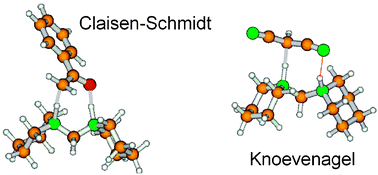A recyclable bifunctional acid–base organocatalyst with ionic liquid character. The role of site separation and spatial configuration on different condensation reactions
Abstract
A series of bifunctional organic

* Corresponding authors
a
Instituto de Tecnología Química (UPV-CSIC), Universidad Politécnica de Valencia-Consejo Superior de Investigaciones Científicas, Avenida de los Naranjos s/n, 46022 Valencia, Spain
E-mail:
acorma@itq.upv.es
Fax: +34 96 387 7809
A series of bifunctional organic

 Please wait while we load your content...
Something went wrong. Try again?
Please wait while we load your content...
Something went wrong. Try again?
A. Corma, M. Boronat, M. J. Climent, S. Iborra, R. Montón and M. J. Sabater, Phys. Chem. Chem. Phys., 2011, 13, 17255 DOI: 10.1039/C1CP21986C
To request permission to reproduce material from this article, please go to the Copyright Clearance Center request page.
If you are an author contributing to an RSC publication, you do not need to request permission provided correct acknowledgement is given.
If you are the author of this article, you do not need to request permission to reproduce figures and diagrams provided correct acknowledgement is given. If you want to reproduce the whole article in a third-party publication (excluding your thesis/dissertation for which permission is not required) please go to the Copyright Clearance Center request page.
Read more about how to correctly acknowledge RSC content.
 Fetching data from CrossRef.
Fetching data from CrossRef.
This may take some time to load.
Loading related content
